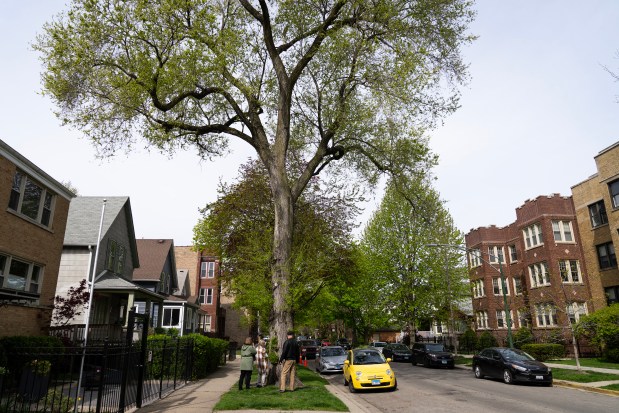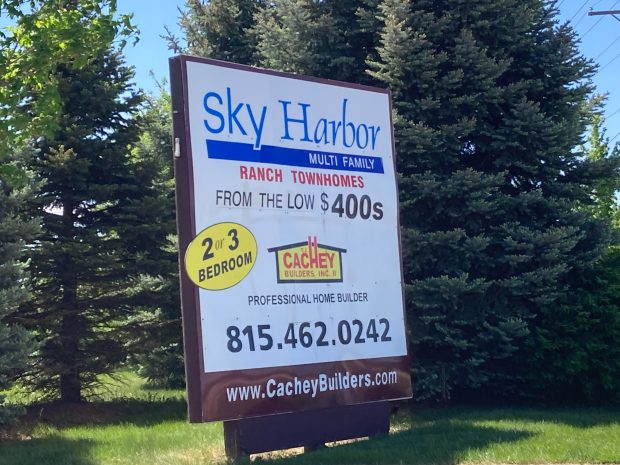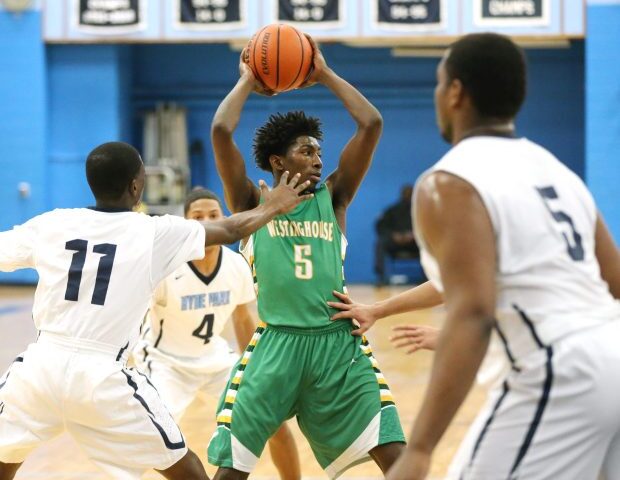When construction for a water line running through the Edgewater neighborhood on the North Side displaced a row of trees John Holden, president of the Edgewater Historical Society, said locals were shocked and confused by the removals.
The outcry stemmed from most of the uprooted trees being more than 50 years old and cherished for their significant benefits, Holden said.
The removals led some neighbors to band together with the historical society and local organizations to document “historic” trees in the area in an effort to stop them from being uprooted.
“We’ve found many trees that are 100 years old or more,” Holden said. “All of these trees have a natural life cycle, and they have decades more of viable life. We’re just hoping we can encourage a more thoughtful process.”
Edgewater’s initiative is one of many around Chicago to preserve or plant trees on this year’s Arbor Day. Established in 1872, the holiday intended to advocate for the planting of trees around the world, was launched by the father of Morton Arboretum’s founder, J. Sterling Morton.
Zach Wirtz, the arboretum’s director of its trees initiative, said the tree-focused botanical garden’s aims remain unchanged. “Our main goal is to increase the capacity of trees across the region, and help folks understand the importance of trees, as well as how to better take care of them so that we can enjoy more benefits from our urban forest,” Wirtz said.
Wirtz said trees were essential to urban populations such as Chicago, where asphalt and paved surfaces can create “heat islands,” which can cause dangerous health effects in areas where shade trees are not available.
Trees can also help with intercepting stormwater, according to Wirtz. Without mature trees, the risk of flooding and contaminated drinking water is increased. Preventing those things is something most communities can agree on, Wirtz added.
“When we’re working with a community-based organization, it’s not only a great way to plant trees, it’s a great way to bring the community together to build up the social cohesion in those areas, and produce a community good everyone benefits from.”
Michael Dugan, director of forestry at Openlands, a nonprofit that aims to increase access to nature across the city, said getting communities excited about and engaged in tree planting is a core part of his work.
Openlands assisted in the Edgewater community’s initiative to document and preserve trees and has numerous other programs that encourage tree planting across the Chicagoland area. One of them, a community tree-planting grant, connects Openlands with people who want to see more trees in their neighborhoods, Dugan said
“It really is a partnership because residents are planting trees with their neighbors, learning about how to care for trees and the importance of a healthy urban forest,” Dugan said. “That’s so important.”
Equity, Dugan added, is a key part of efforts to plant trees throughout the Chicago area, where lower-income neighborhoods tend to see fewer trees planted. Neighborhoods with healthy tree canopies see students with higher test scores and lower rates of attention deficit disorder, Dugan said.
A 2022 investigation by the Chicago Tribune found that the city had planted more trees in wealthy, whiter neighborhoods in the past decade, increasing those disparities. Dugan said that Openlands aims to improve that gap with programs like its grant.
“We know that in Chicago and across other major cities, trees are generally not distributed equally or equitably across our cities and our landscapes,” Dugan said. “Having a healthy urban forest is a benefit economically, socially, environmentally and civically. When residents make an investment in a healthy urban forest, they’re investing in themselves and the places that they live.”
While tree planting is important, Wirtz said the focus should be on preserving tree canopies. Learning how to properly care for trees in the city and fighting to preserve them should be prioritized this Arbor Day, he said.
“We can plant lots of trees, but if we’re removing a lot of trees at the same time, we can end up basically staying in the same space,” Wirtz said. “So we want to make sure that we’re encouraging communities to look at how they can preserve existing mature canopies and really help make sure that those trees are healthy and providing the most benefit possible.”
Now that Holden’s team has documented the mature trees in Edgewater, he said the group is partnering with local environmental experts to develop a plan to save them.
Holden said the group wants to hold the city accountable for any trees, historic or otherwise, it might consider removing.
“One of the people involved is putting together draft recommendations on legislation to address some of these issues,” Holden said. “We’re hoping some of the local aldermen will be inspired by what we’re doing and carry the ball on that. It’s in the early stages.”





